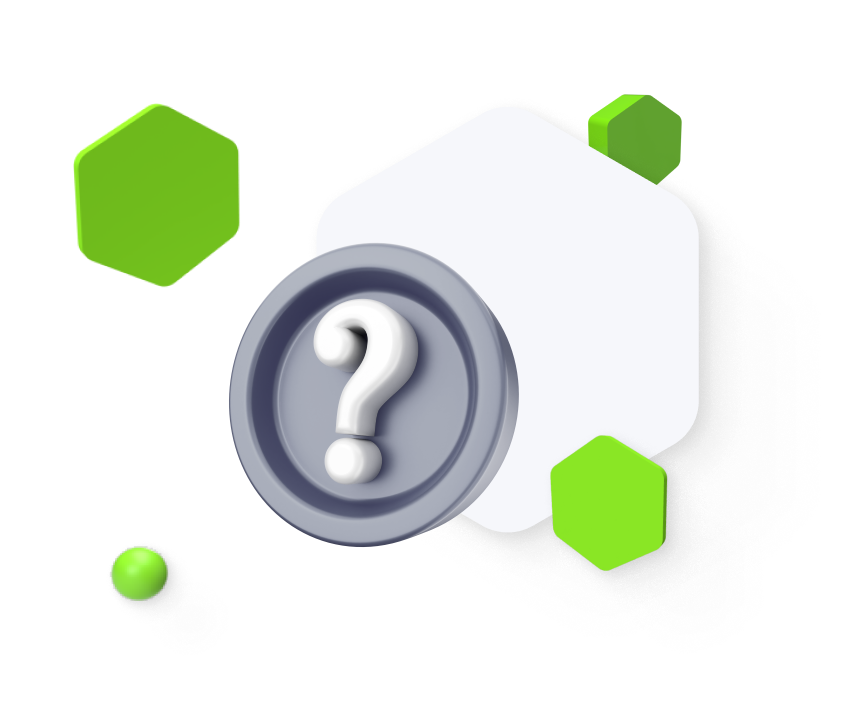Solutions
MVP development for your project


Are you looking for a team of professionals to create MVP for your project?
Our web designers and developers deliver end-to-end digital solutions that win our customers’ hearts.
Introduction to MVP Development
MVP development is a process that involves creating the most basic version of a product with the minimal amount of features necessary to meet customer needs. The idea behind MVP development is to create a product that can then be tested and iterated on to create a more robust version. This process allows businesses to bring their products to market quickly, efficiently, and cost-effectively.
MVP development is also a great way to get customer feedback. By releasing an MVP, businesses can get feedback from customers right away and use this feedback to improve the product and make sure it meets customer needs before they invest more time and money into it.

What is an MVP?
An MVP is a Minimum Viable Product or the most basic version of a product with the minimal amount of features necessary to meet customer needs. It can be seen as a prototype of a product, with the goal being to test the product and gather feedback from customers. Once the feedback is collected, the product can be iterated on and improved to create a more robust version.
MVP development is an excellent way for businesses to bring their products to market quickly and cost-effectively. It allows them to test the product, get feedback from customers, and make sure the product meets customer needs before investing more time and money into it.
Benefits of an MVP
There are many benefits to using an MVP development process. First, it allows businesses to bring their products to market quickly and cost-effectively. By releasing an MVP, businesses can test the product and get feedback from customers without having to invest too much time and money upfront. This can help them make sure the product is what customers want before they invest more resources into it.
Second, an MVP can help businesses save time and money. By releasing an MVP, businesses can test the product, get feedback from customers, and make improvements to the product before they invest more time and money into it. This can help them make sure their product is successful before they invest even more resources into it.
Third, an MVP can help businesses understand their customer base better. By releasing an MVP, businesses can get feedback from customers right away and use this feedback to improve the product and make sure it meets customer needs.
Finally, an MVP can help businesses test new ideas quickly and cost-effectively. By releasing an MVP, businesses can test new ideas without having to invest too much time and money upfront. This can help them make sure their ideas are worth investing in before they invest even more resources into them. An MVP approach can help businesses and startups validate their product idea, minimize their risk, and get their product to market faster and more cost-effectively.
MVP Development process
MVP development is a process that involves creating the most basic version of a product with the minimal amount of features necessary to meet customer needs. This process typically involves several stages: planning, designing, building, testing, and launching.
The planning stage involves researching the market and understanding customer needs. This is an important step, as it will help businesses determine the features they need to include in their MVP.
The designing stage involves creating a prototype of the product and determining the features it will include. This is an important step, as it will help businesses ensure their MVP meets customer needs.
The building stage involves building the MVP. This should be done using agile development best practices, such as continuous integration and continuous delivery. This will help ensure the MVP is built quickly and cost-effectively.
The testing stage involves testing the MVP and gathering feedback from customers. This is an important step, as it will help businesses determine if the MVP meets customer needs and if it needs to be improved in any way.
The launching stage involves launching the MVP and gathering feedback from customers. This is the final step in the process, and it will help businesses determine if the MVP was successful and if it needs to be iterated on in any way.
We can help you with:
01
Discovery workshop
02
Web design
03
Website coding
04
App development
05
UI/UX Design
Common Challenges When Developing an MVP
Developing an MVP can be a challenging process. There are many common challenges businesses face when developing an MVP, such as determining the features to include, finding the right resources and tools, managing the development process, and getting customer feedback.
One of the biggest challenges businesses face when developing an MVP is determining the features to include. This is an important step, as it will help businesses determine what features the MVP should include and what features can be left out. It is important to keep in mind that the MVP should only include the minimal amount of features necessary to meet customer needs.
Another common challenge businesses face when developing an MVP is finding the right resources and tools. This is an important step, as it will help businesses ensure their MVP is built quickly and cost-effectively. It is important to find the right resources, such as developers, designers, and tools, such as project management software, to ensure the MVP is built properly.
Finally, another common challenge businesses face when developing an MVP is getting customer feedback. This is an important step, as it will help businesses determine if the MVP meets customer needs and if it needs to be improved in any way. It is important to get customer feedback as soon as possible, as it will help businesses make sure their MVP is successful before they invest even more resources into it.
Strategies for Successful MVP Development
Developing an MVP can be a challenging process, but there are several strategies businesses can use to ensure the process is successful. These strategies include focusing on customer needs, using agile development best practices, testing the MVP, and getting customer feedback.
The first strategy businesses should use when developing an MVP is focusing on customer needs. This is an important step, as it will help businesses determine what features the MVP should include and what features can be left out. It is important to keep in mind that the MVP should only include the minimal amount of features necessary to meet customer needs.
The second strategy businesses should use when developing an MVP is using agile development best practices. This is an important step, as it will help businesses ensure their MVP is built quickly and cost-effectively. It is important to use agile development best practices, such as continuous integration and continuous delivery, to ensure the MVP is built properly.
The third strategy businesses should use when developing an MVP is testing the MVP. This is an important step, as it will help businesses determine if the MVP meets customer needs and if it needs to be improved in any way. It is important to test the MVP as soon as possible, as it will help businesses make sure their MVP is successful before they invest even more resources into it.
The fourth strategy businesses should use when developing an MVP is getting customer feedback. This is an important step, as it will help businesses determine if the MVP meets customer needs and if it needs to be improved in any way. It is important to get customer feedback as soon as possible, as it will help businesses make sure their MVP is successful before they invest even more resources into it.

If you have any questions, feel free to contact us!
We’ll be happy to dispel all doubts you may have during a free consultation.
Measuring the Success of an MVP
Once an MVP has been released, it is important to measure its success. This will help businesses determine if the MVP was successful and if it needs to be iterated in any way. There are several metrics businesses can use to measure the success of an MVP, such as customer feedback, usage metrics, customer satisfaction, and customer retention.
Customer feedback is an important metric for measuring the success of an MVP. This metric will help businesses determine if the MVP meets customer needs and if it needs to be improved in any way. It is important to get customer feedback as soon as possible, as it will help businesses make sure their MVP is successful before they invest even more resources into it.
We have a couple more metrics left. Usage metrics are also an important metric for measuring the success of an MVP. This metric will help businesses determine if customers are actually using the MVP and if it is meeting their needs. It is important to track usage metrics, such as page views and time spent on the MVP, to ensure the MVP is successful.
Customer satisfaction is another important metric for measuring the success of an MVP. This metric will help businesses determine if customers are actually satisfied with the MVP and if it is meeting their needs. It is important to track customer satisfaction metrics, such as customer reviews and ratings.
Finally, customer retention is an important metric for measuring the success of an MVP. This metric will help businesses determine if customers are actually using the MVP over a long period of time and if it is meeting their needs. It is important to track customer retention metrics, such as the number of customers over time.
Types of MVPs
There are several types of MVPs businesses can use to bring their products to market. Some of the most common types of MVPs are prototypes, minimum feature sets, and customer feedback loops.
Prototypes are the most basic type of minimum viable product. They are usually the first step in the MVP development process, as they allow businesses to test their ideas quickly and cost-effectively. Prototypes are typically used to test customer reaction and gather feedback from customers.
Minimum feature sets are the next step in the MVP development process. They are typically used to test the product and gather feedback from customers. Minimum feature sets usually include the minimal amount of features necessary to meet customer needs.
Finally, customer feedback loops are the final step in the MVP development process. They are typically used to test the product and gather feedback from customers. Customer feedback loops allow businesses to continuously test and iterate on their product to ensure it meets customer needs.
Minimum Viable Product Software Solutions
There are several software solutions businesses can use to help them develop an MVP. These software solutions can help businesses save time and money and can help ensure their MVP is successful. Some of the most popular MVP software solutions include project management software, prototyping software, and customer feedback software. Get to know your target audience through market research of product idea with basic features of your business idea.
Project management software is an important tool for developing an MVP. This software can help businesses manage the development process and ensure their MVP is built quickly and cost-effectively. Popular project management software solutions include Trello, Asana, and Jira.
Prototyping software is another important tool for developing an MVP. This software can help businesses create a prototype of the product and determine the features it will include. Popular prototyping software solutions include Figma, Sketch, and Adobe XD.
Finally, customer feedback software is an important tool for developing an MVP. This software can help businesses gather feedback from customers and use this feedback to improve the product and make sure it meets customer needs. Popular customer feedback software solutions include SurveyMonkey, UserVoice, and Intercom.
MVP development is a popular way for businesses to bring their products to market quickly and efficiently. It involves creating the most basic version of a product with just enough features to meet customer needs. This process can help businesses save time and money and can help ensure that the product they are bringing to market is actually what the customer wants. In this article, we discussed what an MVP is, the benefits of an MVP, the stages of MVP development, common challenges when developing an MVP, strategies for successful MVP development, measuring the success of an MVP, types of MVPs, and MVP software solutions. Start the software development process with your Liki development team.

Przemek
COO

Kasia
Digital Value Manager

Piotr
Business Representative

